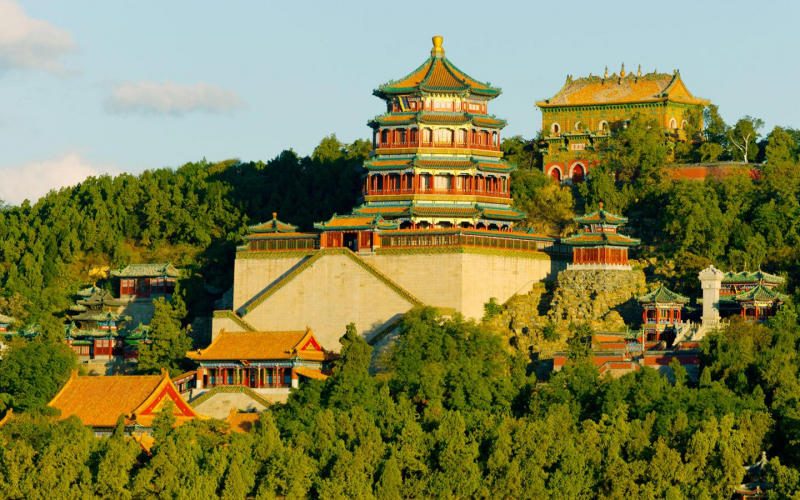The Summer Palace
The Summer Palace, one of the most beautiful historical sites in China, in Beijing is a sprawling complex of lakes, gardens, and palaces. During the Qing period, it served as an imperial garden. Longevity Hill Kunming Lake and the Seventeen Hole Bridge may be found on the inside. It has a surface area of 2.9 square kilometers, with water covering three-quarters of that area. Longevity Hill is around 60 meters tall and contains a series of structures arranged in a logical order. The front hill is brimming with magnificent halls and pavilions, while the rear hill is serene and full of natural beauty. The 2.2-square-kilometer center of Kunming Lake was wholly man-made, and the excavated dirt was utilized to construct Longevity Hill.
The Summer Palace, which was inspired by the gardens of South China, has over 3,000 different Chinese antique structures that contain a collection of over 40,000 different priceless historical treasures from each era. The Summer Palace was added to the UNESCO World Heritage List in December 1998. The Summer Palace was described as "a masterpiece of Chinese landscape garden design, combining natural characteristics such as hills and open water with manmade features including pavilions, halls, palaces, temples, and bridges to make a harmonic ensemble of high aesthetic value." It is also the Central Route terminal of the South-North Water Transfer Project, which has traveled 1,267 kilometers from Danjiangkou Reservoir in Hubei to become Beijing's primary water source.








